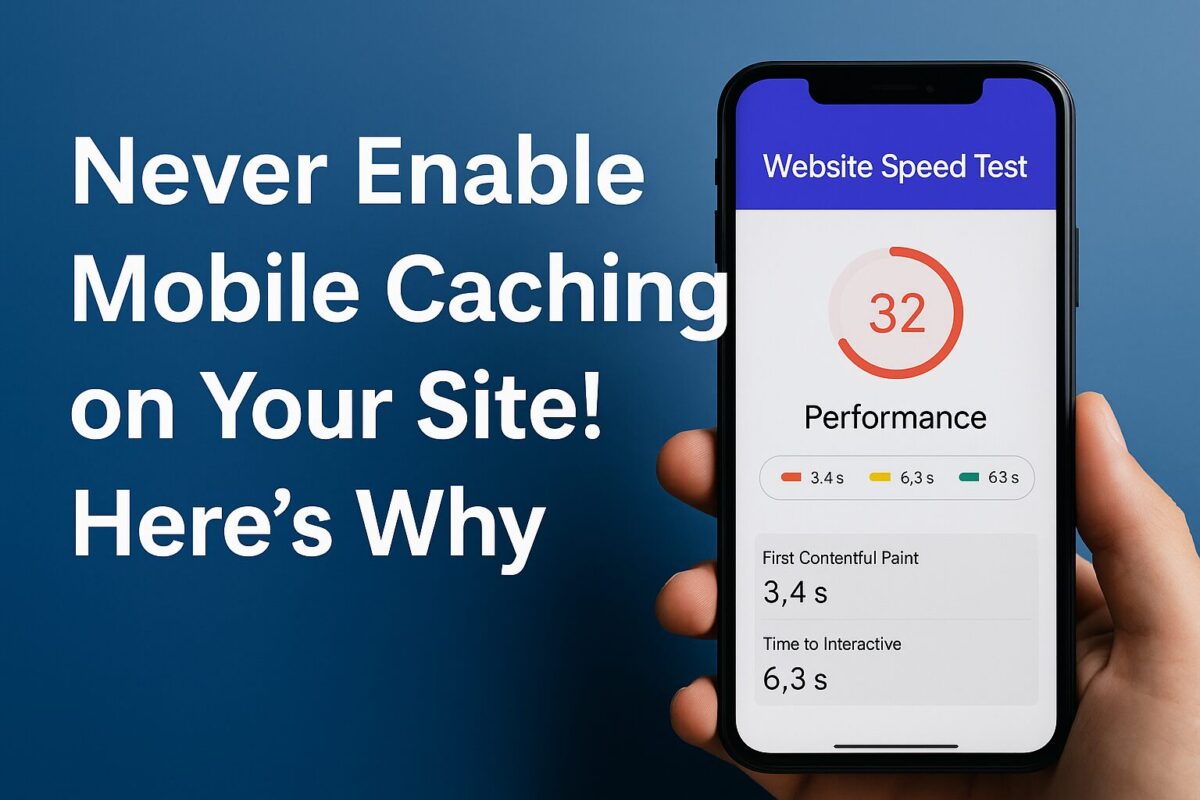¡Nunca actives el almacenamiento en caché móvil en tu sitio! Aquí te explicamos por qué.

Most modern WordPress themes are responsive — they adapt to mobile without needing a separate mobile version. But here’s the catch: enabling mobile caching creates a second cache just for mobile users. And that’s exactly what you should avoid.
What Is Mobile Caching?
Mobile caching means your caching plugin stores a separate version of your website for mobile users. On the surface, that might sound like a good idea — after all, mobile and desktop screens are different, right?
Not really. If your theme is responsive (as 99% of modern themes are), then the same HTML and assets are served to both devices. Separate mobile caching only adds complexity without any real benefit.
Why It’s a Problem
1. Double the Cache Load
Every pageview — one on desktop and one on mobile — creates two cached versions. Multiply that by thousands of products or articles, and you’re burning server resources for nothing.
2. Unbalanced Cache Warm-Up
When users mostly visit your site via mobile (which is true for most online stores), only the mobile cache gets “warmed up”. Desktop visitors hit cold cache — meaning slower load times and lower PageSpeed scores.
3. Lower SEO Scores
Google PageSpeed Insights evaluates performance over time, not just a single warmed-up test. If your desktop cache is always cold, you’ll constantly see low scores — and worse, Google will too. That hurts your SEO.
4. Harder Cache Management
You’ll have to clear, preload, and troubleshoot two caches instead of one. That leads to longer rebuild times, plugin conflicts, and often, broken layouts due to inconsistent CSS or JS behavior.
The Right Way to Handle It
✅ Disable mobile cache in your plugin (e.g. LiteSpeed Cache, WP Rocket, or WP Fastest Cache).
✅ Keep one universal cache for both desktop and mobile.
✅ Make sure your theme is truly responsive.
✅ Use tools like guest optimization or Critical CSS to improve perceived performance instead.
By keeping one unified cache, your site will be faster, easier to manage, and better optimized for both SEO and real users.
You can run a free speed test for your website and get a simple explanation of what exactly needs to be fixed to reach the green zone in Google PageSpeed Insights. Just visit SpeedWP Pro and request your free audit — no registration required. Perfect for store owners, bloggers, and agencies.
